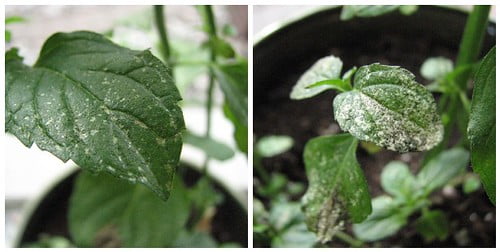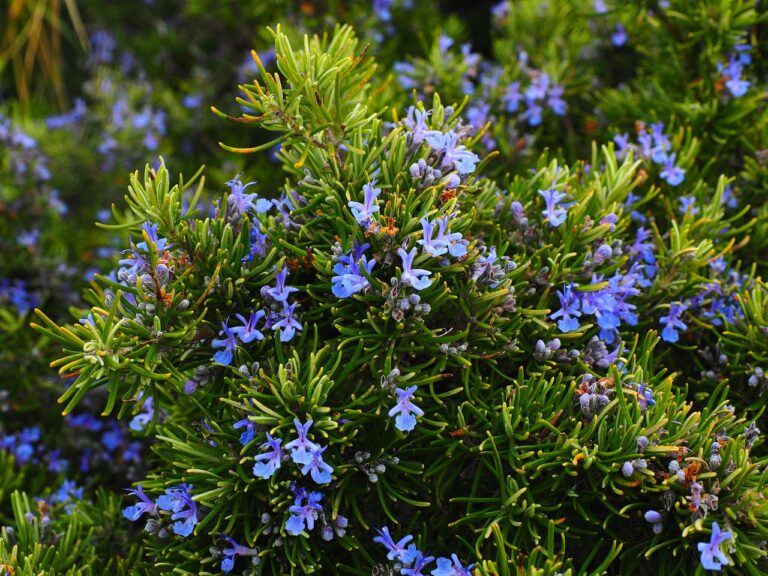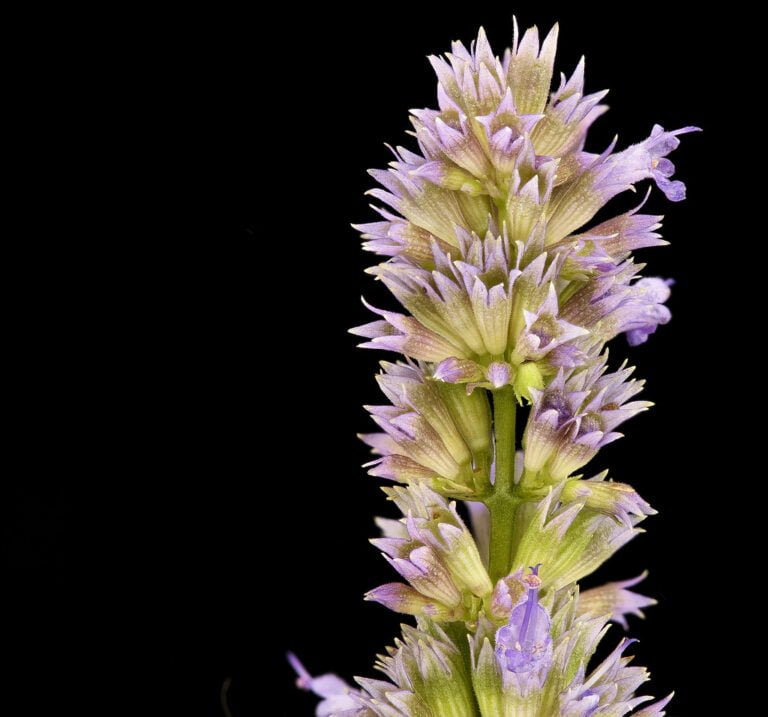Eryngium Foetidum (Long Coriander)
Eryngium foetidum, or long coriander, enchants with its blend of coriander, citrus, and mint nuances, creating a strong flavor profile ideal for enhancing various dishes. Thriving in warm, tropical climates with adequate sunlight, this herb requires well-draining soil and regular pruning for best growth. Harvest its tender leaves for maximum flavor impact and consider freezing for convenient use. With recognized anti-inflammatory properties and culinary versatility spanning across cuisines, long coriander stands as an enchanting addition to any garden or dish, promising both visual appeal and flavor complexity.
Flavor Profile and Aroma
Long coriander, scientifically known as Eryngium foetidum, presents a distinctive flavor profile that intricately blends notes of coriander, citrus, and mint, contributing a unique aromatic depth to culinary creations. As a tropical perennial culinary herb, long coriander‘s flavor is characterized by a pungent combination of these three elements, creating a sensory experience that is both familiar and exotic. The herb’s taste is reminiscent of traditional coriander but with a twist, adding a citrusy brightness and a invigorating minty undertone that sets it apart.
In traditional and modern recipes, long coriander’s flavor and aroma play a significant role in enhancing the overall taste profile of dishes such as soups, stews, curries, and salsas. Its strong aroma permeates through dishes, infusing them with a complex and robust flavor that is highly prized in culinary circles. This herb is often used as a coriander substitute in various cuisines, bringing a new dimension to familiar dishes.
Cultivated for its exotic essence, long coriander’s serrated leaves with elongated shapes and jagged edges not only add visual interest to herb gardens but also serve as a proof to its tropical origins. Its ability to thrive in tropical regions further underscores its unique taste and aroma, making it a sought-after ingredient for chefs and home cooks looking to enhance their culinary creations with a touch of the exotic.
Culinary Uses and Applications
Eryngium foetidum, commonly known as long coriander, plays a pivotal role in enriching the flavor profiles of Caribbean, Latin American, and Southeast Asian cuisines due to its unique and robust taste. The herb’s distinct flavor is utilized in a variety of dishes such as soups, stews, curries, salsas, and marinades, where it adds depth and complexity to the culinary creations. Long coriander is often favored as a coriander substitute, offering a stronger taste that is appreciated in both traditional and modern recipes across these regions.
In Latin America, coriander leaves are particularly popular in dishes like ceviche, a seafood dish marinated in citrus juices and spices, where they provide a fresh and vibrant flavor. Additionally, in Caribbean cuisine, long coriander is frequently used in jerk marinades for meats like chicken and pork, infusing the dishes with a bold and aromatic essence. Its versatility extends to Southeast Asian cooking as well, where it is a key ingredient in various curry pastes, adding an earthy and peppery note to the dishes.
The serrated elongated leaves of Eryngium foetidum not only contribute to its culinary appeal but also enhance the visual aesthetics of gardens and dishes, making it a sought-after herb for both flavor and presentation.
Medicinal Properties and Benefits
Used traditionally in tropical regions, Eryngium foetidum is recognized for its anti-inflammatory and analgesic properties, indicating its potential medicinal significance. Scientific studies have revealed that this plant contains bioactive compounds with various health benefits. One of the key components contributing to its medicinal properties is the essential oil found in Eryngium foetidum. This essential oil contains eryngial as its main constituent, which is responsible for many of the plant’s therapeutic effects.
In addition to its anti-inflammatory and analgesic effects, Eryngium foetidum, also known as spiritweed and fitweed, has been historically used for its calming properties to prevent epileptic fits. The plant has even been investigated for its anticonvulsant properties, aligning with its traditional use in managing epilepsy. These properties make Eryngium foetidum a promising candidate for further exploration in the field of natural medicine.
Growing Conditions and Care Tips
Long coriander, scientifically known as Eryngium foetidum, thrives in warm, tropical climates with ample sunlight. Maintaining well-draining soil and consistent moisture levels is essential for best growth. Regular pruning promotes bushier foliage and overall plant health.
Light and Water
Preferring partial to full sunlight, long coriander thrives best when provided with well-draining soil and consistent moisture to guarantee its healthy growth. To make certain the best development of long coriander, consider the following care tips:
- Place the plant where it can receive partial to full sunlight throughout the day.
- Use well-draining soil to prevent waterlogging and root rot issues.
- Water consistently to maintain the soil consistently moist, avoiding both drought and waterlogging.
- Consider using a saucer under the pot to provide humidity and prevent water damage to surfaces.
Soil and Fertilizer
To guarantee ideal growth of Eryngium foetidum, it is vital to provide well-draining soil with a pH range of 6.0 to 7.5. Long coriander thrives in soil that allows excess water to drain away, preventing waterlogging that can harm the plant. Concerning fertilizer, a balanced application during the growing season can benefit the coriander plant. Organic matter such as compost can be integrated into the soil to improve fertility levels, promoting healthy growth. Mulching around the plants serves to retain moisture and suppress weed growth, creating excellent conditions for the coriander to flourish. It’s important to maintain consistent moisture levels in the soil by watering regularly, ensuring it remains moist but not overly saturated.
Harvesting and Storage Techniques
When harvesting Eryngium foetidum leaves, selecting young and tender foliage is crucial to enhance the flavor and aroma of this herb. Here are some key techniques for harvesting and storing Eryngium foetidum:
- Cutting Technique: To harvest Eryngium foetidum leaves, utilize clean, sharp scissors or pruning shears to trim the leaves close to the base of the plant. This approach helps stimulate new growth and allows for continuous harvesting throughout the growing season.
- Storage in the Refrigerator: Following harvesting, store the Eryngium foetidum leaves in a plastic bag in the refrigerator. This helps maintain their freshness and flavor for up to two weeks. Ensure to eliminate any excess moisture before storing them to prevent spoilage.
- Drying Method: Consider drying the harvested Eryngium foetidum leaves by hanging them in a well-ventilated area away from direct sunlight. This drying method helps preserve the color and flavor of the leaves for long-term use. Once dried, store them in airtight containers in a cool, dark place.
- Frozen Storage: Another option for preserving Eryngium foetidum leaves is by finely chopping them and storing them in an airtight container in the freezer. This method allows for convenient access to the herb when needed for cooking, while maintaining its flavor and aroma.
Culinary Recipes Featuring Long Coriander
Long Coriander, scientifically known as Eryngium foetidum, offers a robust and distinctive flavor profile that enriches various culinary dishes in Caribbean, Latin American, and Southeast Asian cuisines. This herb, considered a coriander substitute with a stronger taste, adds depth and complexity to soups, stews, curries, and salsas. Its unique flavor combines elements of coriander, citrus, and mint, providing a invigorating twist to traditional and modern recipes. The United States Department of Agriculture recognizes the culinary versatility of Eryngium foetidum, highlighting its ability to raise the taste of diverse dishes.
In Caribbean cuisine, Long Coriander is often used in dishes like callaloo, a traditional stew made with leafy greens, okra, and often crab or salted meats. The addition of Long Coriander enhances the flavors of the dish, adding a citrusy and spicy kick. In Latin American cuisine, this herb is a key ingredient in sofrito, a flavorful sauce used as a base in many dishes, including rice, beans, and meats. Its aromatic and pungent qualities contribute significantly to the overall taste profile. Additionally, in Southeast Asian cuisines, Long Coriander is commonly used in curries, soups, and marinades, providing a distinct flavor that sets these dishes apart.
Cultivation and Gardening Tips
I find that long coriander, Eryngium foetidum, flourishes in well-draining soil that is consistently moist. This plant thrives best in partial to full sunlight to guarantee ideal growth. Regular pruning and harvesting of the leaves are essential practices to promote bushier growth and maintain the plant’s health and flavor.
Soil and Watering
An important aspect of cultivating Eryngium foetidum, also known as Long Coriander, involves maintaining well-draining soil to prevent waterlogging and root rot. To guarantee the best growth of this plant, proper attention to soil moisture is essential. Here are some key points to take into account:
- Eryngium foetidum thrives in well-draining soil to prevent waterlogging issues.
- Consistently moist soil is preferred, requiring regular watering for healthy growth.
- Soil should be kept moist but not waterlogged to avoid fungal diseases.
- Adequate drainage is essential to prevent water stagnation around the roots.
Maintaining the right balance of soil moisture is crucial for the successful cultivation of Eryngium foetidum.
Sunlight Requirements
To optimize the growth of Eryngium foetidum, proper exposure to partial to full sunlight is essential for robust development and cultivation success. Long coriander, scientifically known as Eryngium foetidum, thrives best when receiving at least 6-8 hours of sunlight daily. Sunlight is vital for the photosynthesis process, enabling the plant to produce energy for growth and flavor development. Insufficient sunlight can lead to leggy growth and diminish the aromatic qualities of the leaves. Hence, it is vital to place long coriander in a location with adequate sunlight exposure, whether indoors near a sunny window or outdoors in a spot that receives ample sunlight throughout the day. Providing the right amount of sunlight is key to fostering healthy and productive long coriander plants.
Pruning and Harvesting
Regular pruning of long coriander, Eryngium foetidum, is vital to promote bushier growth and ensure a continuous supply of flavorful leaves for culinary purposes. When it comes to harvesting leaves, it is crucial to do so strategically to maintain the plant’s health and flavor profile. Here are key practices for trimming and gathering coriander leaves effectively:
- Trim back stems to stimulate new leaf growth and prevent premature flowering.
- Gather leaves as needed to keep the plant productive and flavorful.
- Clip the leaves at the base of the stem for best regrowth and sustained production.
- Regular pruning not only supports plant health but also enriches the visual appeal of long coriander in your garden or container.




